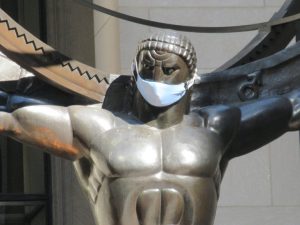HHalf a century ago, a multiracial new town envisioned by a leading Black activist was one of the most visible and ambitious projects to emerge from the civil rights era. Today it is almost entirely forgotten.
Earlier this year I took part in an online event focusing on “Visions of Black-led Communities.” 1 One of the communities explored in the two days of panel discussions and documentary screenings was Soul City; and as quickly became apparent, most of those attending the sessions had never heard of the place and knew nothing about the extraordinary efforts of a leading Black activist, a veteran of the civil rights movement, to build a multiracial new town in the Piedmont region of North Carolina half a century ago.
The new book Soul City: Race, Equality, and the Lost Dream of an American Utopia is thus all the more timely. Thomas Healy, a law professor and author of an earlier book on free speech, 2 has produced a riveting narrative that tracks the history of Soul City from its heady beginnings in the late 1960s, to its impressive progress in the ’70s, to its sorrowful and anticlimactic demise in the early ’80s. “Soul City,” he writes, “was one of the most ambitious and high-profile projects to emerge from the civil rights era. It was covered extensively by the local and national press, featured on NBC’s Today show, studied at Harvard Business School, and watched closely by university planning departments around the country.” 3 Inevitably, then, the story of Soul City is not only about the place itself but also about its disappearance from cultural memory and historical record.
The story of Soul City is not only about the place itself but also about its disappearance from cultural memory and historical record
Throughout the book Healy balances archival research with tenacious reporting, carefully situating Soul City within the roiling racial and cultural politics of postwar America. Soul City was the brainchild and vision of Floyd McKissick, Sr., and as becomes clear, the story of the town and its creator are inseparable. Born in 1922 in Asheville, North Carolina, McKissick came to understand early on that he was, as he wrote in the opening lines of an unfinished autobiography, “Black, first. American, second.” 4 It was his youthful experience of the systemic racism of Jim Crow that inspired him to study law, and, more than that, to oppose existing institutional inequities: while enrolled at North Carolina College of Law, an all-Black institution, he brought suit against the University of North Carolina for its discriminatory admissions policies. The case was argued, successfully, by Thurgood Marshall, then lead attorney of the NAACP Legal Defense Fund, and McKissick became the first Black alumnus of the state’s flagship law school. After graduating, he set up an office in Durham and was soon representing scores of plaintiffs who were challenging segregationist practices. All the while the young attorney was becoming a forceful presence in the rising civil rights movement, organizing sit-ins at lunch counters and freedom rides on southern highways, and speaking at protest rallies along with the Rev. Dr. Martin Luther King, Jr., Stokely Carmichael, James Farmer, and other emerging leaders.
By the mid-1960s, McKissick had become national director of the Congress of Racial Equality, or CORE, one of the “big five” civil rights organizations, then at the height of its influence. 5 Yet as the decade wore on, he became, along with other movement leaders, increasingly impatient with the slow pace of change, the frustratingly partial victories of civil rights legislation. Following the assassination of Martin Luther King in 1968, McKissick became a vocal proponent of Black Power and its ethos of racial pride, political representation, and economic autonomy. For McKissick this last component was especially important. “Unless the Black Man attains economic independence, any ‘political independence’ will be an illusion,” he wrote in Three-Fifths of a Man, his 1969 book on the Black liberation struggle. “White intimidation and control, especially in the ghettoes and the rural South, will continue as long as the Blacks are economically dependent.” 6
It was this focus on economic power that drove the founding of Soul City. And, as McKissick well understood, it was this same aspiration that had motivated earlier Black activists, including Booker T. Washington and W.E.B. DuBois, who had made similar arguments about economic strength as a crucial benchmark of racial progress. “Black leaders had … long recognized the leverage that economics gave them when demanding equal treatment,” Healy writes. “It was not the moral argument for integration that won the day after Rosa Parks was arrested for sitting in the front of a bus; it was the financial pain inflicted on Montgomery when Black residents boycotted the city’s transit system.” 7


